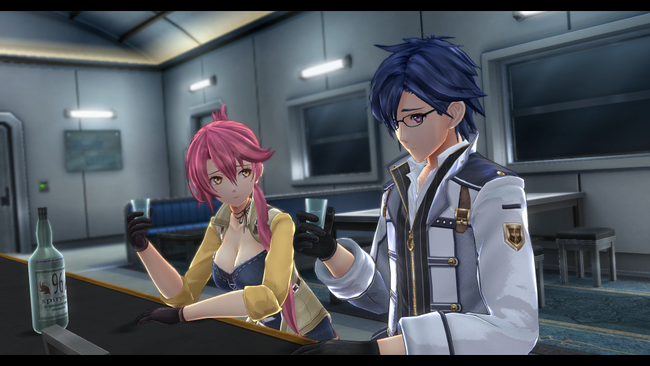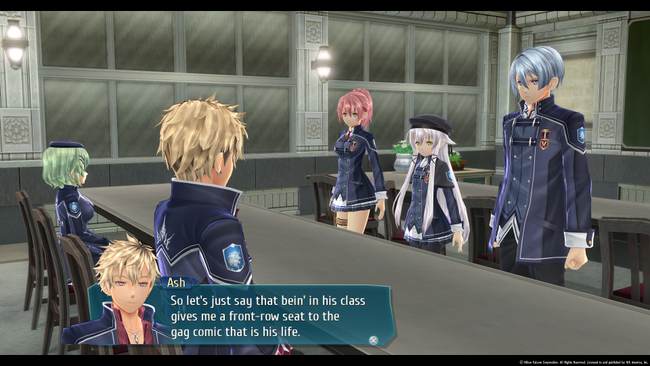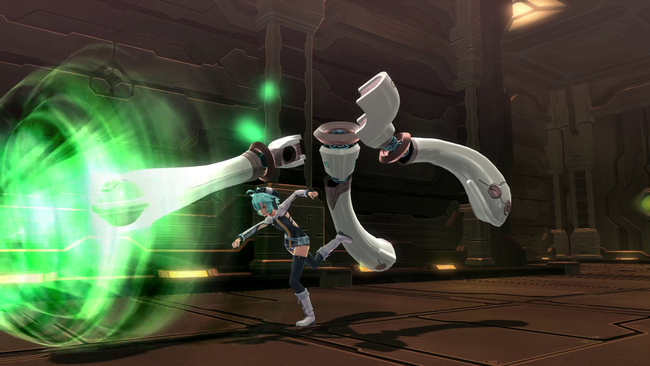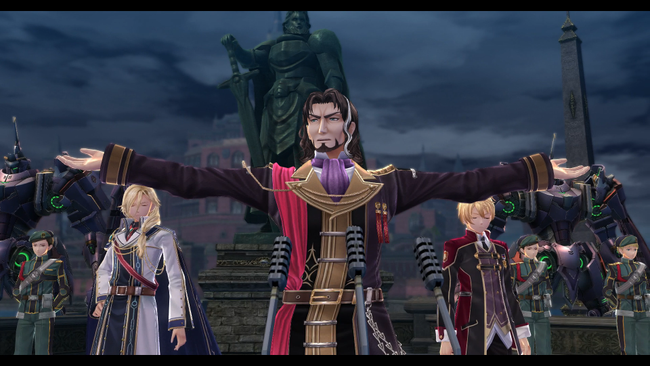
The Legend of Heroes: Trails of Cold Steel III Review
I honestly can’t think of another game that I’ve had this much trouble reviewing. We, at RPG Site, have grappled with the inherent issues that arise when critiquing a series’ that so heavily relies on knowledge of previous entries in a franchise before – with this very same series, no less – and if anything, The Legend of Heroes: Trails of Cold Steel III is an even tougher nut to crack. While on one hand players can certainly play and enjoy the game having only played the other two entries in the “Cold Steel” arc of the series’, quite a bit of my own personal enjoyment of the game stems from callbacks to events and characters from the Trails in the Sky trilogy, and even the as-of-yet unlocalized Crossbell duology (Trails from Zero and Trails to Azure).
Trails of Cold Steel III is an absolute behemoth of a game. Even considering the western release’s inclusion of Turbo mode, I’ve clocked just under 70 hours in the game as of the start of Chapter 4. I wasn’t quite able to finish the game in time for the embargo, and I can’t exactly say that I’m shocked about it. When I did finish it, I had clocked 93 hours into the game. I can only imagine just how long the game would take without Turbo helping to expedite things like exploring dungeons, or cutting down on the animations during combat.

While normally I’m not really one to talk about a game’s length during a review, I think that length is particularly important when discussing Cold Steel III. The game’s long, but it doesn’t feel nearly as padded as I expected it to, going in. The problem is, a significant portion of the game’s time is spent dealing with the fallout of events that happened in previous games. Chapter 1 and Chapter 2 lose a lot of impact if you haven’t played Trails in the Sky and the Crossbell duology respectively. They’re still enjoyable in their own right, I’m sure, but what might not feel like padding to me – due to having the context behind these events – might just feel like padding to someone else, that just wouldn’t resonate with them nearly as much. To the game’s credit, it does give you enough context to these events so that you can at least understand them, but hearing about an event in a previous game versus experiencing it firsthand is completely different.
To make a long story short – players can absolutely play Trails of Cold Steel III if they’ve only played Cold Steel I and II. I wouldn’t necessarily recommend it, but you’ll still understand Rean’s story, even if you miss all of the nuances along the way. That being said, I can’t even dignify NIS America’s insistence that players can start with Cold Steel III with a proper response. I know why they’re saying it, but despite the introduction of New Class VII, the story is explicitly Rean’s story – and you’d be jumping in after well over 100 hours of character development, with almost no context on how exactly he got to where he is, at the start of the game. I can’t imagine that Cold Steel III, or Rean, would be very interesting if you lacked that context. It’s very much building upon the ideas that Cold Steel I and II laid the foundation for.

Speaking of foundations, Trails of Cold Steel III feels incredibly similar to the first Cold Steel, mirroring a large portion of its format. Players once again interact with a special “Class VII” at Thors Military Academy (this time, the newly founded Branch Campus), though this time with Rean as the teacher, helming a cast of new students. You’ll help out around campus, have a free day, train in a dungeon, and then it’s off to Field Exercises to see the bulk of the chapter’s story. Some might call it safe, myself included, but it works. In fact, I’ve seen more than my fair share of fans that played the original Japanese release claim that the title was “Cold Steel I, but done right”. I can certainly see why.
Trails has certainly seen a significant glow up, making the jump to a PlayStation 4 exclusive. While areas are all still segmented, and never really feel any larger than areas in the two previous entries in the series, the game not only looks significantly more visually impressive – to the extent that I’d say it looks good, rather than “good for a Falcom game”. The previously mentioned Turbo mode (labeled “High-Speed Mode” in-game) which has been added for the western release, helps make the entire experience just all that smoother, as well. To match the gorgeous new visuals, Cold Steel III’s soundtrack is a strong contender for one of the best in the series’ as a whole.

Combat hasn’t exactly seen an overhaul, but the addition of an extra Master Quartz slot for each character gives players a bit more wiggle room to customize each member of their party, especially since every Master Quartz can now be equipped by up to 2 characters at once. The much larger change to combat this time around revolves around the Brave Order system. Brave Points – which are also used for special attacks upon unbalancing enemies – can now be expended during any character's turn, to activate certain specific buffs for the entire party. These can be as simple as reducing the damage your party will receive for a few turns, or more specific like allowing Arts to be cast instantly for a set number of turns. Even from the start of the game, you have a decent selection of Orders at your disposal, and it’s clear from the outset that players are encouraged to use them whenever they can. Although I played on Normal for my playthrough, it’s very clear that Brave Orders will be essential for success on harder difficulties.
Divine Knight and Panzer Soldat Battles have also seen some tweaks, though reall the largest addition is how nearly every battle now involves at least two mechs in your party at once. It's not much, but personally it helped make the battles feel like a nice change of pace, rather than a slog like I felt they were in Cold Steel II.
Perhaps one of my largest complaints with the original Cold Steel 1 and 2, was that the cast was spread a little too thin by the sheer number of characters that the plot had to juggle. As a result, I don’t think any of the original Class VII and co. got nearly as much character development as the main teams from either Trails in the Sky or Crossbell. I think New Class VII is a much better implementation of the idea that Falcom attempted to execute with the original two games in the arc, partly thanks to the smaller size of both the class itself as well as the Thors Branch Campus. It certainly helps make each character more interesting from the outset, that every student and staff member at the Branch Campus are considered outcasts in the game’s society, lending itself well to a very colorful cast of characters – both new and returning.

Trails of Cold Steel III's story is much darker than even Cold Steel 1 and 2, especially once players reach the latter half of the story. I won't spoil any of the events that lead to that tone shift, but it was a fascinating experience seeing the signs of where the tale was heading. While it isn't exactly a spoiler at this point - the way that Cold Steel III concludes is absolutely one of the craziest cliffhangers I've ever seen. Here's hoping that NIS America can deliver us Cold Steel IV in a timely fashion, as players will absolutely be chomping at the bit for it once they've finished Cold Steel III.
This, of course, leads us to the other elephant in the room. Trails of Cold Steel III’s translation has been handled by a different company than Trails of Cold Steel I and II. Namely, NIS America takes the reins from the series’ previous license-holder, XSEED Games. I won’t get into the how and why folks have been worried about the game’s translation, not because fans weren’t justified in their skepticism, but rather I believe it’s better to just discuss how the overall translation turned out. Fans can breathe a sigh of relief – as Cold Steel III’s translation does the series’ justice. Dialog has all of the character that players have come to expect from the series’ translations, and despite a few grammatical issues that I ran into with the review (many of which that will have been fixed, or will be fixed, via patches between now and launch), it more than meets expectations. Although I was cautiously reading lines to search for issues for the first few hours, by the time Chapter 3 was in full swing I had stopped analyzing the script much at all – it didn’t feel off, it just felt like Trails. I'm happy to say that this quality persisted through the end of the game, and Trails of Cold Steel III's localization absolutely is up to par with Cold Steel 1 and 2's.

Of special note is the English dub. While some characters from the first two games I wasn't exactly fond of their dub voices, more or less all of the new characters, as well as ones returning with a much larger role, are fantastic. All of the returning members of Class VII and co deliver just as good performances as in the previous titles, too, though some - like Sean Chiplock's returning performance as Rean - is undoubtedly the best work they've done in the series as of yet. Special props go out to Austin Lee Matthews as Ash Carbide, as he's absolutely my stand-out pick for the new members of the dub cast, and he just nailed the character - particularly where it counted.
For the most part, the game's technical performance is more than solid - with a few key exceptions. On base PlayStation 4 the game runs at 1080p and 60FPS. On PS4 Pro, it targets 4K at the same framerate. While I ran it on a PS4 Pro, it was on a 1080p screen, so the image was downsampled from 4K and worked like some really nice anti-aliasing. For the most part the performance was a locked 60 FPS, but during scenes with lots of character models on screen at the same time, the framerate would nosedive. This isn't a problem for the vast, vast majority of the game - but one particular moment at the end of Chapter 4 is just abysmal, and I don't know if it's because Falcom has issues with LoD scaling on their models, or what - but the performance in that section was inexcusable.
Trails of Cold Steel III is an absolutely massive game, as even with utilizing turbo a large portion of my playthrough, I still sunk over 90 hours into the game by the time the credits rolled. There's so much more I could talk about. Side activities like the new card game, Vantage Masters, which is absolutely a Gwent styled game on its own - with dozens of characters throughout the adventure willing to play a set with you - and more. At the end of the day, however, I'm just happy to see that the series appears to be in good hands with NIS America.